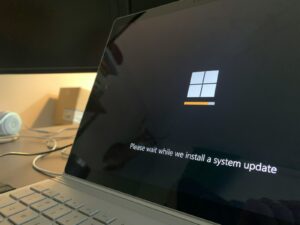Lone Microsoft Engineer Thwarts Potential Global Cyberattack Through Linux Backdoor Discovery
There are a ton of cyber stories to cover today, so let’s do the commercial ones first. I didn’t want to miss this story from last week. One guy...
More from Featured StoryMore posts in Featured Story »
- FCC Votes to Restore Net Neutrality, Reclassifying Broadband as Essential Service
- FTC Votes to Ban Noncompete Agreements, Predicting $300 Billion Wage Increase Annually
- Record Low in Ransomware Payment Rates, with $1.1 Billion Paid in Q1 2024, Reports Coveware
- As New Models Emerge, New Study Reveals 92% of Windows Machines in Large Organizations Are Not AI-Ready
- Managed Services Market in the US Dominates Global Contract Value, According to IDC Analysis
More from Podcast StoryMore posts in Podcast Story »
- FCC Votes to Restore Net Neutrality, Reclassifying Broadband as Essential Service
- AI’s Role in the Workplace: Enhancing Productivity Without Displacing Jobs, According to New Study
- Microsoft Urged to Rebuild Trust Amid Security Breaches and Rising Criticism
- FTC Votes to Ban Noncompete Agreements, Predicting $300 Billion Wage Increase Annually
- Apple Cuts Vision Pro Headset Forecast Amid Cooling Demand, Delays Cheaper Model

 Unlock with Patreon
Unlock with Patreon





